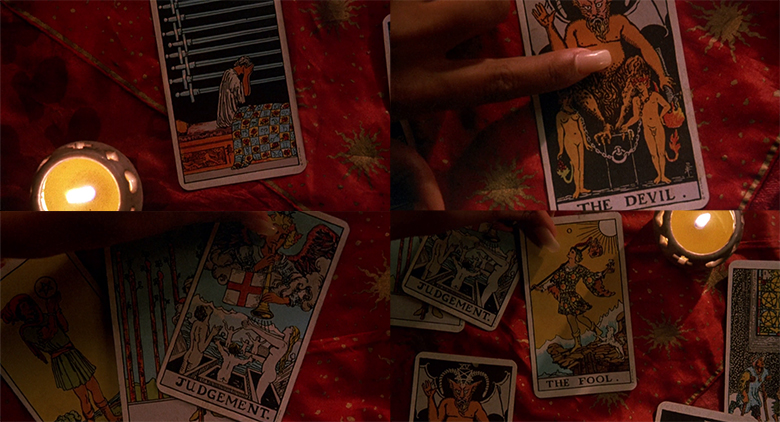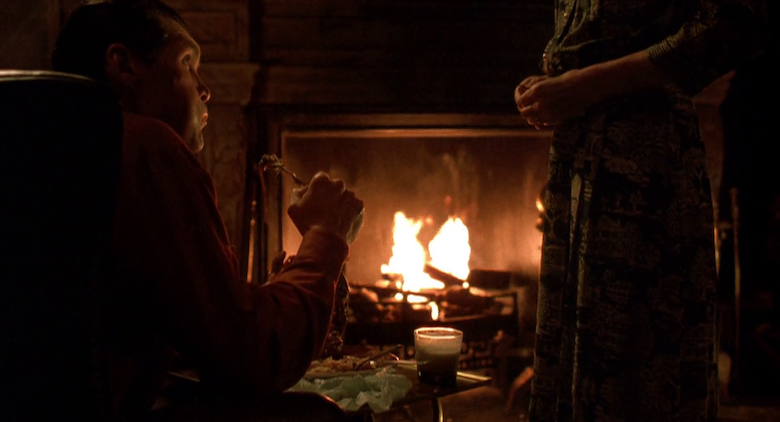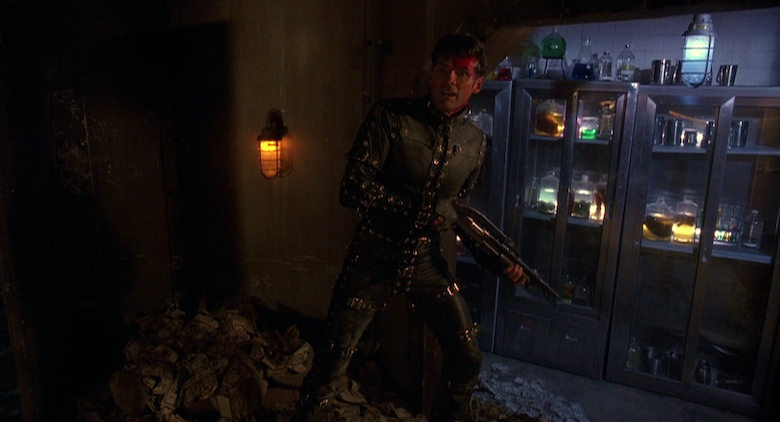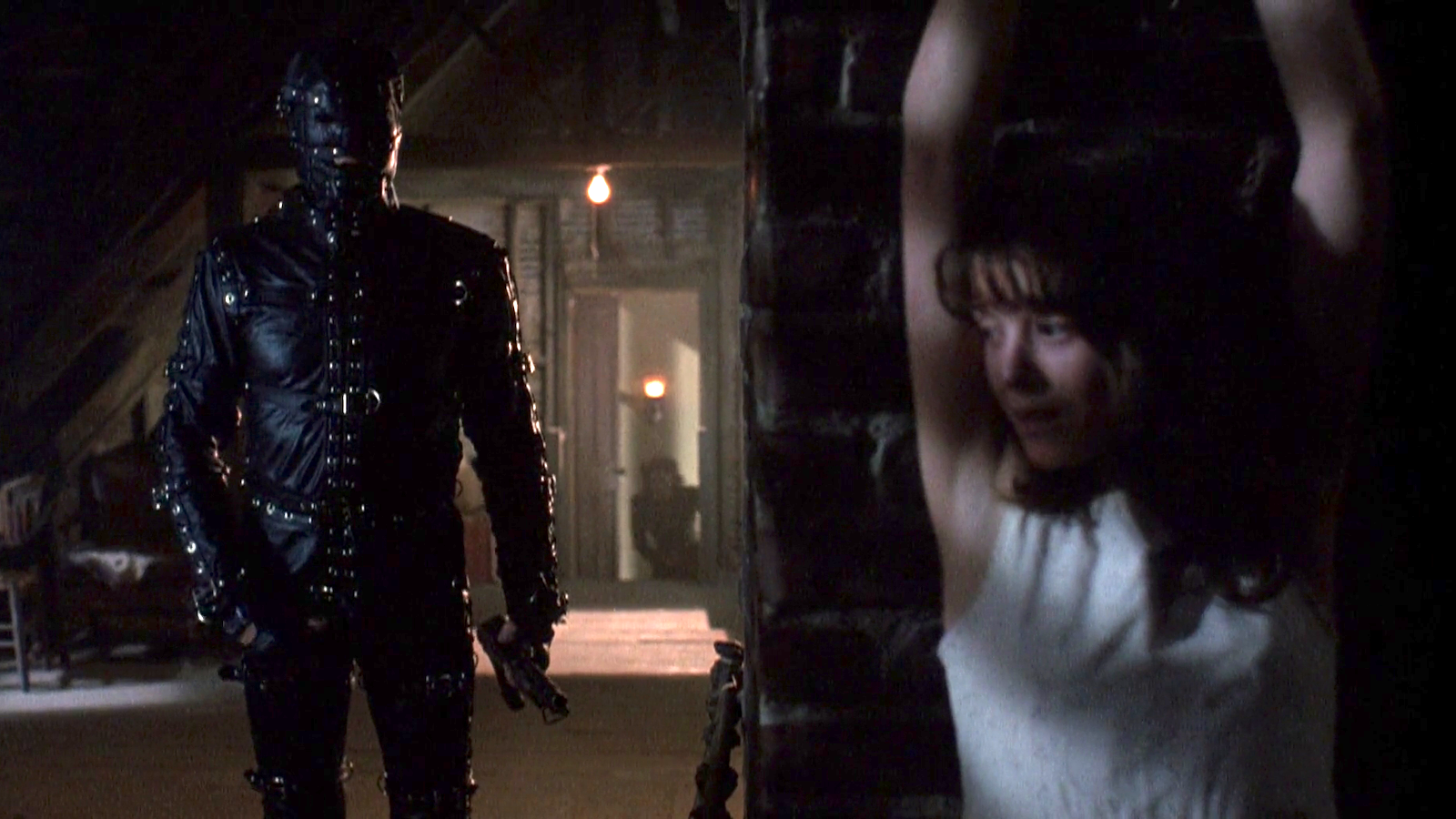I fondly remember not only seeing People Under the Stairs in the movie theaters in 1991, I will always remember that I oddly saw it 3 times in one weekend… a combination of seeing it with different friends, family, and just boredom I guess. But also, I loved it.
I’ve come to realize that Wes Craven may be my ultimate professional hero. His playful love of horror mixed with a certain bookish demeanor (different than the Heavy Metal Rob Zombie and Eli Roth types) appeals to my own attraction to the genre. I’ve come to think of Wes Craven as one of the most literary and folk-inspired directors, before Guillermo Del Toro likely took the crown.
In People Under the Stairs we have some unique decisions made that lead me down a rabbit hole. Which ultimately turned into a reading of the film that begins and ends with the introduction to the film. The Tarot cards.
The Tarot Cards
The wonderful beginning to Wes Craven’s People Under the Stairs is of the boy protagonist, nicknamed Fool, and his older sister reading tarot cards for his 13th birthday. We are introduced to knights and devils, and of course, the fool card. The fool is a fool because he has not been tested yet. A boy becoming 13 symbolizes the ultimate test for any hero of a story. And certainly for knights.
Just as many tales of knights who must prove their worth, a boy must prove he is a man. It isn’t a coincidence that he just a few minutes later dresses like a boy scout. The boy scouts being an organization that ultimately is about boys maturing to become men.
Getting back to the Tarot cards.
The first we see is the Nine of Swords card. This symbolizes dread and fear. This is the beginning of the journey. The moment we see in the movie a few seconds later, which is poverty and their lot in life. Fool and his family need money for their mother’s ailments. They need to be saved.
Then there is the first card his sister mentions, the Death card. As noted, “Both the man and the woman have horns, as if to show that the more time they spend with the Devil, the less human they become. The chains make it appear as though the devil has taken them captive.” This represents Fool being captured in the movie. And the actual people under the stairs. They were once like Fool, but the longer they are imprisoned in the house, the less human they become.

Then there is the Judgement card. “The Judgement card is calling you to rise up and embrace a higher level of consciousness for the service of your Highest Good. You are experiencing a spiritual awakening and realizing that you are destined for so much more.” This is Fool being tested. In People Under the Stairs, Daddy and his shotgun and all the rest that come his way throughout the movie is his judgement. He must traverse the horrors of the house he is trapped in. He must become his best self.
Finally there is the Fool card. “The Fool is generally a positive card indicating new beginnings.” So although in the beginning of the movie these seem ominous, in fact it represents the ending when Fool outsmarts Daddy and ultimately wins the day. Because it is a new beginning, with the money chaotically dispersed amongst the neighborhood and new opportunity given to the young protagonist.
And so the tarot cards are an example of the plot being foreshadowed at the beginning of the film.
In an interesting twist, the knights depicted in the tarot cards also uniquely mimic one of the major stories that Wes Craven has underlying the entire story.
The Knight’s Tale
Wes Craven loves fairy tales. Whether it is producing Wishmaster, or adding Hansel and Gretel to A New Nightmare (dissected here in video Child Eating in Horror).
After examining People Under the Stairs it becomes obvious to me that the movie is Craven’s take on the traditional knight or dragon-slayer tale, searching for treasure and freeing a princess from the grasp of a malevolent king and queen (or dragon).
There are many iterations and formulas to the traditional dragon-slayer tale. It can be debatable which stories fit the mold. That is the fun in myths and folk tales. There is the Grimms brothers’ The Two Brothers, there is The Dragon and the Prince of Slovic lore, there is the Knights of the Fish of Spanish lore, and of course Andromeda and Hesione of Greek and Roman myth. And finally I am adding Jack the Giant-Slayer or “Jack and the Beanstalk” as another example, as I think there are many similarities.
The main elements of most of these stories are:
- A poor protagonist
- Riches or gold that he may acquire for him and his people
- A dragon or giant that he must slay
- A princess that is kidnapped and must be rescued
This motif is found in many places, including Tolkien’s The Hobbit. It’s also related to the dragon hoarding gold trope and the “damsel in distress” trope. You can even find it in your favorite video game, Super Mario Brothers (which included a kidnapped princess, a dragon-like villain, and lots of gold coins).
Secondary common elements that are sometimes included are:
- The princess being tied with her hands above her head, similar to Clash of the Titans, King Kong, Donkey Kong, and Dragonslayer (1981).
- The dragon or beast sometimes being replaced with a King or Queen, or aided by them.
- The poor protagonist/dragon-slayer needing to outwit the dragon or beast with his smarts.
- The entire land is poor, and the protagonist’s win often symbolizes a newfound wealth for all the people there (i.e. defeating the dragon or king that has been hoarding the treasure).
So now where does People Under the Stairs, Daddy, Mommy, and this creepy house come into play? Here we go…
People Under the Stair’s Daddy as the Dragon
Ultimately what I think Wes Craven is doing is using a That House is Creepy horror movie mixed with Religious Horror tropes and transposing a modern-day dragon-slayer tale onto it.
Fool’s family is poor. The entire neighborhood is, as shown in his walking up to his apartment. Finding gold in that scary old house is the inciting incident that begins the story. Daddy and Mommy are hoarding them in their house, while the neighborhood around them grow increasingly poor.
Then enter the malevolent Daddy and Mommy. A natural comparison for Daddy in People Under the Stairs is Jack Torrence in The Shining. Mommy with her crazed take on motherhood and religiosity you can compare to Carrie. But I think there is a better comparison, one that is found in clues within the film.
In the first scene Daddy is found eating. It looks very medieval, like a Lord or King eating his meat next to a fire. It might as well be a King, fresh off his recent hunting venture.

Later his transformation into the black get-up certainly gives a modern sadomasochistic vibe, but it is also his transformation from king to dragon, the black leather a stand-in for sleek reptilian scales.
Alice is the “princess” figure. And like many of the dragon-slayer tales, she is not only chained up at a certain point, subject to the whims of her “dragon,” she also provides the hero help in numerous cases. Just as Andromeda does in Greek myth (or Clash of the Titans), Princess Peach does for Mario, and many other tales.
In the tales of castles, kings, and dragons, the hoarding of gold (which Daddy and Mommy clearly are) could be a seen as a division of class, with the rich nobility hoarding their riches within the walls of a castle. And the townspeople, they were kept outside. The fool, the young knight, his job is to overtake the greedy king, queen, or dragon, steal the princess, and make out with the riches.
[blockquote footer=”Morbidly Beautiful”]The child (in People Under the Stairs) is bombarded with choices; to be the man of the house or to live out the rest of his childhood, to turn to crime or stay at home and wait for fate’s decision, and to keep his own interests in mind or help those who need it most.[/blockquote]The people under the stairs, those are the poor. Fighting over whatever scraps that could be taken from the rich. They do in People Under the Stairs just as you can imagine the poor did in Medieval times. The knight’s job was to set them free, while at the same time proving his worth. In another time and another story, this knight was Robin Hood. In People Under the Stairs, it is a young African American boy, a fitting vessel for modern times.
The people under the stairs are the sounds of the poor, working class fighting their way up to the surface. To a fool, they may be scary at first. But when he becomes enlightened, he realizes that these scary beings are the ones he must free from the walls of tyranny.

At the end of the movie, Daddy thinks he finds Fool counting the money, letting the gold fall through his fingers. This is nearly identical to countless instances of heroes confronting dragons who have been hoarding gold. And in most cases, the hero outwits the dragon, just as Fool does with his clever candle trick.
Last Updated on March 21, 2021.


4 Comments